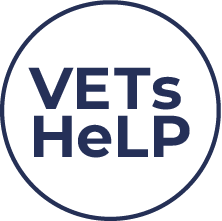Oropharyngeal Airways in Paediatric Patients
Oropharyngeal airways (OPAs) are useful in maintaining airway patency in unconscious patients of all ages. OPAs are often referred to as a Guedel's airways, after the American physician who developed them. These devices are useful adjuncts in unconscious patients, but do carry risks if not sized or inserted correctly.
General paediatric airway considerations:
- Appropriate sizing requires access to the full range of OPA sizes to ensure the correct one is used based on the anatomical structures of the child or infant.
- Prior to insertion remove visible debris from the oropharynx via suction, avoid extended periods of suctioning to minimise the risk of bradycardia.
- Do not perform blind finger sweeps in children, as this can force a foreign body further down the airway and completely occlude at the level of the cricoid ring.
- Be aware of loose dentition, as school aged children may have loose teeth that can become dislodged in the airway.
When inserting an OPA in children under 8-years-old:
- Sizing is important: measure from the centre of the incisors to the angle of the mandible
- Use a tongue depressor to assist in insertion: in paediatrics this is needed to ensure the tongue is not pushed back by the oropharyngeal airway
- Insert the oropharyngeal airway gently: insert under direct vision, putting the oropharyngeal airway in concave side down. This is to avoid damaging the soft palate.
- Continue to use jaw thrust after insertion, to maximise airway patency
- Hold the head in the appropriate position for the age of the patient: neutral position for infants under 12 months of age, and the slight sniffing position for children aged over 1 year
If you are interested in updating your knowledge and confidence in paediatric airway management, you may be interested in attending our Paediatric Advanced Life Support courses These workshops utilise a simulation based approach and are based upon the current Australian Resuscitation Council guidelines.
For a full list of events and courses please visit https://medcast.com.au/courses.
References:
Australian and New Zealand Council on Resuscitation (ANZCOR) ANZCOR Guideline 12.6 – Introduction to Paediatric Advanced Life Support Techniques in Paediatric Advanced Life Support.
Hambrecht, K. (2019). Cardiopulmonary resuscitation: basic and advanced life support. Chapter 70 in Brown, D., Edwards, H., Buckley, T., and Aitken, R.L. (eds.). Lewis’s Medical-Surgical Nursing: Assessment and Management of Clinical Problems. (5th edn.). Elsevier: Chatswood.
Royal Children’s Hospital Melbourne (RCH) 2019, The Paediatric Trauma Manual: Airway Procedures.
Content reviewed 2/2025

Susan is the Head of Nursing Education for the Medcast Group.
DipAppScNsg, BN, CritCareCert, CoronaryCareCert, TraumaNsgCareCert, CertIV(TAE), MN(Ed), and GradCert(Ldrshp & Mgt).
Become a member and get unlimited access to 100s of hours of premium education.
Learn moreCo-billing and split billing are often a source of confusion for many GPs. This FastTrack clearly defines these two methods of billing, including examples, explanations of when it is and isn’t appropriate to co- or split bill, and common compliance pitfalls. 30 mins each RP and EA available with the quiz.
The Coordinated Veterans’ Care (CVC) Program is a DVA initiative that allows GPs to provide structured, proactive care in the community for eligible veterans and war widows. This FastTrack provides a guide to billing the CVC program, and outlines a strategy for its practice-wide integration.
Achilles tendinopathy is a common cause of posterior heel pain and functional impairment. GPs are well-placed to coordinate care for these patients. This FastTrack fact sheet provides a concise summary of diagnosis and non-surgical management, including when to refer. Earn 30mins each RP and EA CPD with the quiz.

